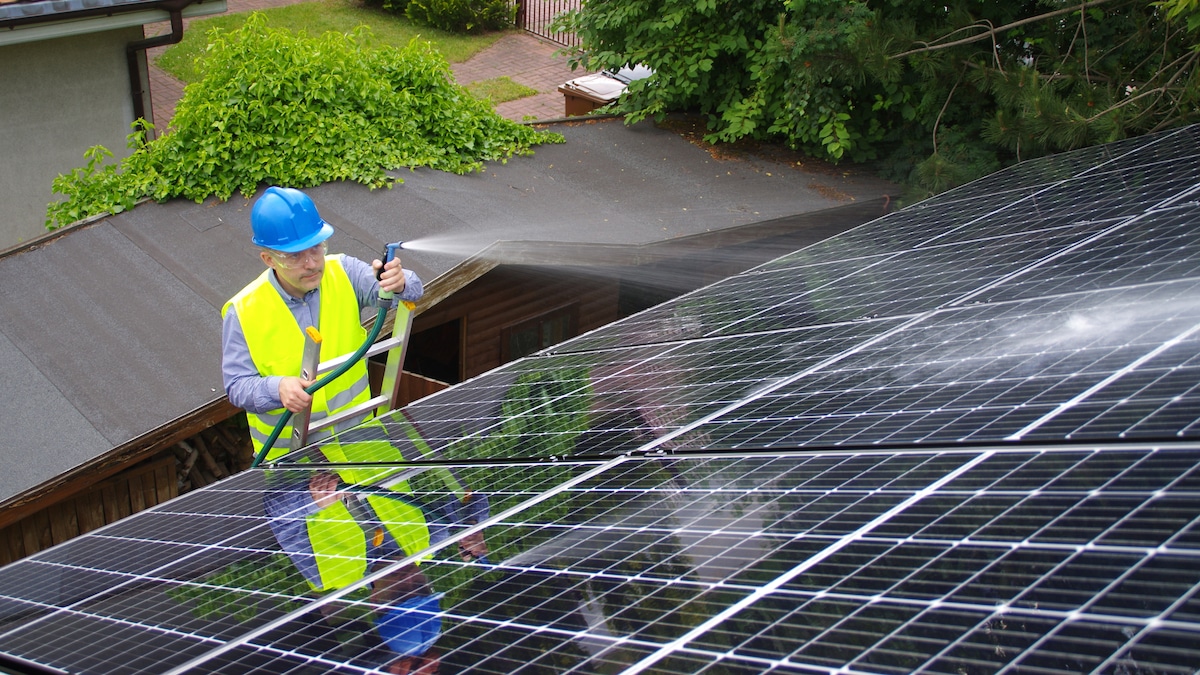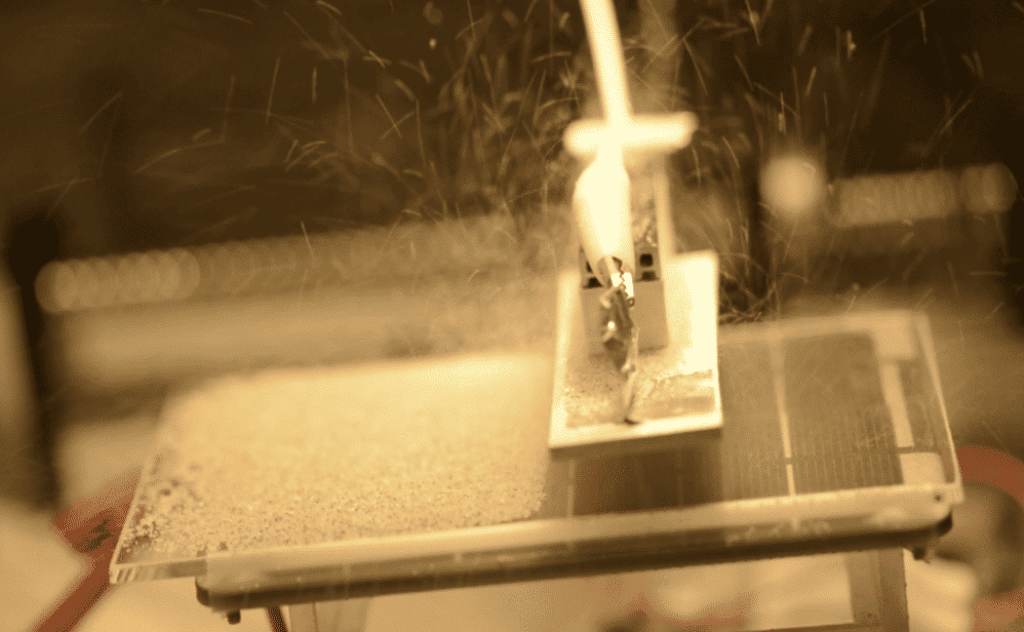
Waterless Way to Clean Solar Panels Discovered by MIT Researchers

Solar power currently accounts for 3% of power generation in the U.S. By the end of the decade, it’s expected to reach 10%. Many solar power plants will be placed in desert locations, where sunlight is abundant, but regardless of the location, solar panels do get dirty over time. Rather than wasting water to clean the panels, which is essential for optimal energy output, MIT researchers have found a new way to clean solar panels without using any water.
Dust, air pollution particles, and other debris may reduce energy output from solar panels by 25%, according to a 2017 study. Keeping them clean is important, but we use about 10 billion gallons of water per year to wash solar panels. This equates to enough drinking water for about 2 million people. Further, cleaning solar panels with water makes up about 10% of the cost to operate a solar installation.
Waterless cleaning with brushes is sometimes used, but this method isn’t as efficient as cleaning with water and has led to scratched, and therefore less efficient, solar panels. But researchers at MIT have found a way that requires no water or contact at all to clean the panels.

Instead of water or cleaning brushes, the researchers use electrostatic repulsion to wick away dust and debris from the panels. This works by sending an electrode over the panels via a metal bar. The electrode gives off an electric charge to the dust particles, which are simultaneously repelled by a charge applied to an ultra-thin transparent conductive layer on the panels. The dirt then “leaps” off of the panels, according to an MIT press release.
The researchers shared their findings in Science Advances. In their own lab tests, the study authors found output reduced by up to 30% when panels go without cleaning for just one month. They also calculated that even a 1% reduction in power for a 150-megawatt solar power plant would equate to $200,000 in lost annual revenue. Globally, even 3% to 4% less output could cost up to $5.5 billion.
“There is so much work going on in solar materials,” said Kripa Varanasi, professor of mechanical engineering. “They’re pushing the boundaries, trying to gain a few percent here and there in improving the efficiency, and here you have something that can obliterate all of that right away.”
The findings could have multiple benefits, from conserving water to reducing operating costs to producing more energy. An electrostatic repulsion cleaning system could be automated for regular cleaning to maintain optimum energy output.
“Given the significant efficiency losses posed by dust fouling and the associated water footprint for cleaning the panels, we expect that our waterless electrostatic cleaning can provide an efficient and cost-effective approach for maintaining dust-free solar panels, contributing to sustainable operation of solar farms,” the study concluded.

 233k
233k  41k
41k  Subscribe
Subscribe 